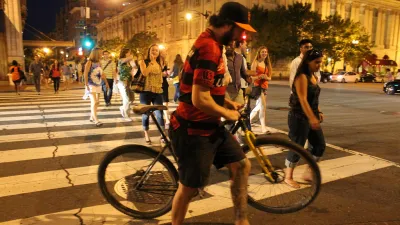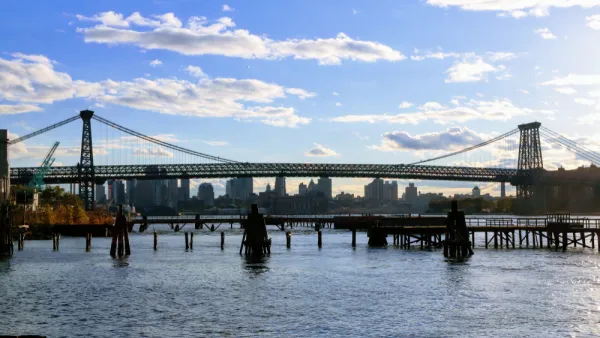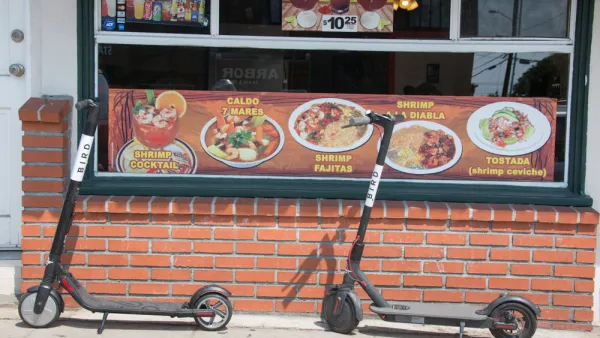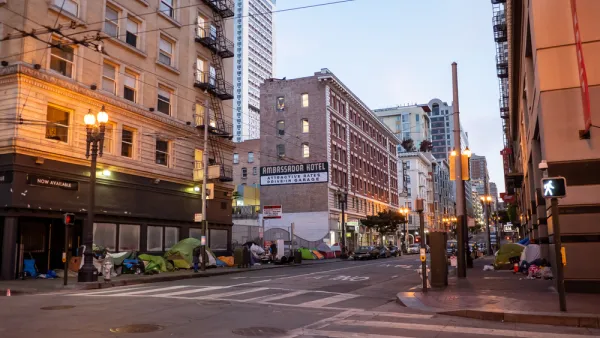In this op-ed special to The Sacramento Bee, Michael Andersen of PeopleForBikes and Melissa Merson of America Walks make a convincing argument for protected bike lanes to improve both bike and pedestrian safety by getting cyclists off the sidewalk.

It's illegal in many (if not most) places to bike on sidewalks, and it's dangerous, not only for pedestrians, but for cyclists themselves. Yet cyclists continue to do it for a very simple reason: it's perceived to be safer than the alternative—biking in the street with traffic.
"People bike on sidewalks for two main reasons: because they’re looking for a space that’s physically separated from cars and trucks, or they’re traveling against traffic on a one-way street," write Anderson and Merson.
Nobody prefers to ride a bicycle on a sidewalk next to people on foot, who are inherently unpredictable: they may suddenly stop to tie a shoelace or turn to look in a storefront window.
The best way to get bikes off sidewalks is to construct protected bike lanes, they argue. "Protected bike lanes sharply reduce sidewalk biking, resulting in fewer clashes, recent city studies shows," they write.
Well-designed, protected bike lanes, which use posts, curbs or parked cars to divide bike and auto traffic, create a safer solution to both of these needs. In project after project, adding a protected bike lane to a street has sharply cut sidewalk biking even as it greatly increased bike traffic.
And they have evidence from D.C., Manhattan and Brooklyn to prove their point that protected bike lanes protect pedestrians from cyclists as much as they protect cyclists from motor vehicles. Anderson and Merson wrote this piece to add Sacramento to the below list.
- On L Street in Washington, D.C., bike traffic jumped 41 percent with a new protected lane, and the number of bikes on sidewalks fell 27 percent.
- With a protected lane project on Columbus Avenue in New York City, bike traffic jumped 56 percent; the number on sidewalks fell 46 percent.
- On Brooklyn’s Prospect Park West, biking soared 190 percent; sidewalk riding plummeted 81 percent.
Diverting just $1 million of that to create 35 miles of protected bike lanes each year (that’s at $30,000 per mile) would increase the long-term capacity of Sacramento’s street system by making biking a safe and comfortable alternative to the car – while also making walking on sidewalks safer and more pleasant.
FULL STORY: A solution for bikes and pedestrians

Analysis: Cybertruck Fatality Rate Far Exceeds That of Ford Pinto
The Tesla Cybertruck was recalled seven times last year.

National Parks Layoffs Will Cause Communities to Lose Billions
Thousands of essential park workers were laid off this week, just before the busy spring break season.

Retro-silient?: America’s First “Eco-burb,” The Woodlands Turns 50
A master-planned community north of Houston offers lessons on green infrastructure and resilient design, but falls short of its founder’s lofty affordability and walkability goals.

Test News Post 1
This is a summary

Analysis: Cybertruck Fatality Rate Far Exceeds That of Ford Pinto
The Tesla Cybertruck was recalled seven times last year.

Test News Headline 46
Test for the image on the front page.
Urban Design for Planners 1: Software Tools
This six-course series explores essential urban design concepts using open source software and equips planners with the tools they need to participate fully in the urban design process.
Planning for Universal Design
Learn the tools for implementing Universal Design in planning regulations.
EMC Planning Group, Inc.
Planetizen
Planetizen
Mpact (formerly Rail~Volution)
Great Falls Development Authority, Inc.
HUDs Office of Policy Development and Research
NYU Wagner Graduate School of Public Service




























